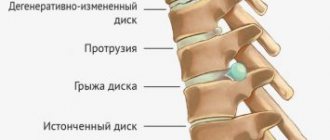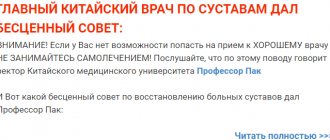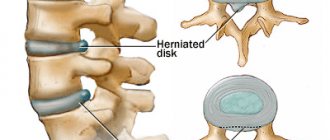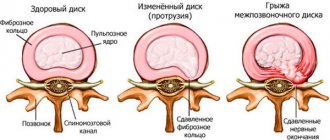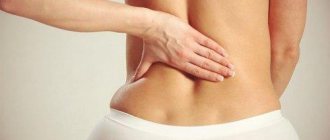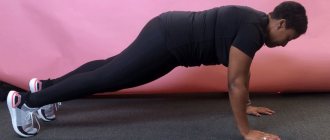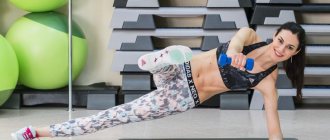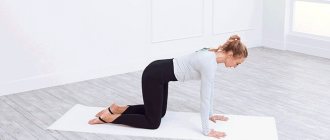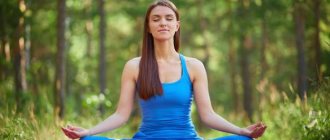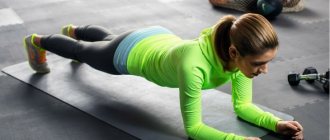You are using an outdated browser. Please upgrade your browser to improve your experience.
The plank is a universal exercise for all muscle groups that can be done both in the gym and at home on the floor. By devoting at least 5 minutes of time to this exercise every day, you can significantly transform your body. What is 5 minutes?! It's so little. Then why aren’t all people on the planet slim, with toned, elastic buttocks and a flat stomach?! Most people are actually lazy, while others openly complain about back pain when doing this exercise. Is it possible to get rid of the pain or do I have to endure it?
The benefits of the plank exercise
A person feels most energetic when the muscles are toned. By doing the plank correctly, you best work out the entire muscle corset (abdomen, neck, back, chest, hips, lower back, back).
The plank helps you pump up absolutely all muscle groups in 5 minutes a day. Except that it doesn’t provide cardio. Therefore, if you want to have more or less full-fledged exercise every day, do a little cardio before the bar.
Rules for performing the plank
The correct technique for performing the exercise will help avoid back and lower back pain and give good results. At the moment, there are a large number of modifications of this exercise, but now we will look at the classic version (on the elbows). Lie on your stomach fully erect. Place your toes on the floor and place your hands on your forearms. Next, try to feel how each part of your body works. Your shoulders should be perpendicular to the floor, your eyes should look forward or, in extreme cases, to the floor.
It is very important to monitor the position of your back. It should be smooth, without bending or bending. The same applies to the lower back. Tighten your stomach and buttocks properly. The chest should not touch the floor. In the plank you need to stand still. The optimal time for a beginner is 1 minute. Perform at least 3 approaches daily; increase the load over time.
Is it normal to feel back pain after doing planks?
Few beginners are able to stand in the plank for 1 minute. As a rule, after 15 seconds the body begins to tremble, you want to give up and start all over again. If you really feel some discomfort in the back area, then be sure to figure out the source of the problem.
Back pain can be considered normal only if it is muscle pain. The pain should subside 2 weeks after the first session and should not bother you again. If you are dealing with joint pain, then you are faced with more serious difficulties that should be resolved together with your doctor.
If you do not have any pathologies, but your back hurts after doing the plank, then think about what you are doing wrong and reconsider the technique of performing the exercise.
Contraindications
The plank is not recommended for people with the following problems:
– kyphosis, arthrosis, radiculitis, lordosis, sciatica;
– spinal injuries and hernia;
Only by determining the true cause of back pain can you make the right decision regarding its treatment. If you cannot cope with the problem on your own, be sure to consult a doctor for professional advice.
Subtleties of babywearing. Part 2 - no back pain!
In the first part of the article, we learned what the center of gravity is and how it is related to back pain when carrying loads.
And today we will find out what mistakes mothers most often make when wearing a sling and how to avoid them, and, accordingly, how to get rid of back pain.
So, as we have already mentioned, the center of gravity in women is located approximately in the navel area. In order to carry comfortably in a sling, you need to a) if possible, place the baby in the center of your body, b) press him tightly to you and c) align your own center of gravity as much as possible - with the center of gravity of the passenger. This is easy to do if you remember a simple rule: the baby’s pelvis should be located approximately at the level of the mother’s navel and slightly higher. If the mother is very tall and the baby is very small (and vice versa), you can focus on their solar plexuses: they should approximately coincide. And everything will work out.
So, if your theoretically healthy lower back hurts in a sling (when worn frontally) or your shoulder blades ache (when worn on the hip or in slings on one shoulder), this can most likely indicate a displaced center of gravity. As a rule, the following errors in windings lead to this:
1. The child is not attracted to the mother: initially too much fabric is left in the pocket, the pocket is not adjusted. Maybe just the opposite: at first everything was fine, but the pocket stretched during the movement due to the fact that mom left the slack behind her back and it was gradually redistributed throughout the entire panel. A carelessly tied knot can have the same effect.
2. The child is positioned too low. The kissing distance (that is, the distance that allows mom to kiss the top of the head) is a romantic criterion, but not one hundred percent reliable. The coincidence of the solar plexuses is much more certain.
3. The M-position is not observed - the child’s legs hang down, thereby disturbing the balance of the couple.
How to determine if you have made such a mistake if you are not a consultant?
1. You are in pain. You feel uncomfortable.
2. Place the baby in the sling and look at yourself in the mirror from the front and in profile. Are you leaning back, arching at the waist? Is your shoulder with the sling (in the case of a one-shoulder sling) noticeably higher than your free shoulder? Most likely, something didn't work out.
3. You have finished winding - raise both hands up and clap your hands there. How enjoyable is this for you? Maybe you are afraid, you prefer to insure the passenger with one hand? 4. You have finished winding. Hug your baby over the sling. Do you want to lift him a little higher and hold him tighter? If so, most likely the winding is weak and the position is too low.
A few more words need to be given additionally to the issue of the center of gravity when carried on the back. On the one hand, it is more physiological to carry an older baby behind your back than in front. On the other hand, choosing the right height becomes somewhat more difficult. The problem is that the vertical axis gives a surprise:
– The lower we place the child, the more stable our body is. But to compensate for the load, we will have to bend over, and this will put extra stress on the spine and muscles - and pain in the lower back.
“The higher we position the child, the less we have to bend over - it’s easier to carry.” But the insidious center of gravity in this case strives to move forward - the vertical goes beyond the support area and the figure loses stability! Considering that we have not a backpack or a sack of potatoes behind us, but a child, a fall threatens double trouble.
How to be? Professionals involved in carrying loads over long distances have special formulas for calculating the required height. For example, this one: H = 0.3xP-3 cm, where P is a person’s height, and H is the distance from the bottom of the backpack waist belt (in our case, ergonomic) to the center of gravity. In addition, there is an opinion that the optimal place will be the midpoint between the level of the adult’s center of gravity and the middle of the trapezius muscle. But if this is a little difficult for you, you can focus on perhaps less precise, but simpler criteria:
1. Pat yourself with your palm at the base of your neck, so that your fingers are behind your back. Do you feel the muscle pad? This is a special place for your baby's cheek.
2. After placing your baby in the sling, look in the mirror. (Yes, yes, again). Try to catch the baby's gaze with your eyes. If this works, everything is great!
3. If you place the child behind your back from your hip, from a chair, from a step - i.e. from the level of the lower back - be sure to move it higher, pushing it from below under the butt. And check with a mirror that the height is sufficient.
The value of the center of gravity is so high that if it is neglected, wearing it in the most expensive, complex sling will not give you any pleasure. And on the contrary: by following these simple rules, you can wear it relatively comfortably even in a curtain. Light your load!
Valentin Dikul and his system for restoring the functioning of the spine
The main merit of V.I. Dikul, perhaps, is that, having received a compression fracture of the spine in his youth, with a Group 1 disability, he was able to overcome the disease at the cost of tireless training and enormous willpower. In the Dikul centers (there are several of them in Moscow) they treat not only ailments of the musculoskeletal system, but also the most severe injuries with almost one hundred percent success. Dikul has developed many exercises for different parts of the spine, as well as those affecting diseases such as various curvatures, herniated intervertebral discs and other pathologies of varying severity, osteochondrosis, etc.
Gymnastics using the Valentin Dikul method perfectly relieves diseases of the musculoskeletal system
According to the author, the exercises are performed regularly, 3 times a week, and each lesson takes place in the same sequence as all previous ones. This is necessary in order to “wake up” the muscles. Since the period of restoration of nerve impulses in the spine is quite long, muscle fibers atrophy during this time and the person remains disabled, confined to a chair.
Breathing should remain even and calm; you should not push yourself to the point of exhaustion with exercise. By the way, this applies to almost all methods developed to restore the spine and relieve back pain. The exercise is performed thoughtfully; you need to feel every muscle of your body, mentally imagine how it contracts and stretches.
For example, Dikul’s recommendations for relieving back pain:
- We lie on our stomach, touch the floor with our chin, and stretch our arms forward. Let's arch our back and raise our straight limbs as high as possible. Let's stay like this for a while. Let's slowly lower our arms and legs. With each repetition, you need to increase the duration of the delay. Do it ten times. Subsequently, the number of repetitions does not change;
- We lie on our backs, wrap our arms around our shoulders crosswise. We turn the body in different directions alternately, raising the left or right shoulder. We do 8 approaches (right-left);
- We stand up, put our feet shoulder-width apart, and put our hands on our belts. Slowly lean forward, pause briefly and straighten up. We do it eight times.
And in the lower back:
- Lie on your back, arms to the sides. We alternately turn our hips to the sides, and the body remains in place. We fixate briefly on each side.
Video: Dikul exercises to get rid of back pain
https://youtu.be/L06pXHC94Ng
These exercises are designed to relieve severe lower back pain and are performed during flare-ups of the condition.
What to do if your back hurts from the sling?
Certified consultant at Die Trageschule and mother of two daughters
Back pain is a common companion for a young mother. First, in the last months of pregnancy, the lower back ache from the load, then the shoulders ache from the need to carry an increasingly heavier baby in your arms. It would seem that a sling that optimally distributes weight should be the solution to the problem. But it happens that even in a sling we experience discomfort and pain. However, in this case the matter can be fixed!
The first question you should honestly answer yourself (and your sling consultant) when choosing a sling is: are your back and joints healthy? Are there old forgotten injuries, scoliosis that started in childhood, or displaced intervertebral discs? This will not be an absolute contraindication for babywearing, but the specialist will take this information into account. He will help you choose a wearing option that will be as comfortable and gentle as possible for you. If you know for sure that your back is not ok, you should get the approval of your doctor before you start wearing a sling!
Physical exercises - the bar for osteochondrosis: what you need to know
- You cannot exercise during an exacerbation - you are more likely to harm yourself than to help.
- Did you feel pain during the exercise? You should immediately stop the activity and resume it only after 3-4 days.
- All movements (including during warm-up) should be as smooth as possible, without any “strain”.
- Warm-up is required!
- There is no need to overload yourself - after completing classes you should feel only a little tired, but not collapse from overexertion.
- In no case should you take painkillers before exercise - this way you won’t feel when your back is under increased stress, and you will harm yourself!
As you can see, the rules are quite simple and there is nothing extraordinary about them. However, strictly following them will help you avoid health problems!
https://youtu.be/37JMNlvOIqU
Neck goes numb
Check to see if the panels on the shoulders are bunched together, if they are twisted or pinching the muscles. Don’t forget: the sling panel on the shoulder should be well straightened and gathered into neat folds. If the panel is too wide, simply spread it across your arm, letting it cover it almost to the elbow. Now take the edge and fold the fabric from the bottom up, from the elbow to the shoulder. This way you will make the panel narrower and increase the tension of the fabric. And remember: it’s better to let it go slightly down your arm than to go close to your neck! This applies to all types of slings.
5 more types of this movement
In addition to the classic version, there are several different variations.
Classic on outstretched arms
This is a more difficult type of exercise. We perform it in the same way as the previous version, but we focus on outstretched arms.
With emphasis on one leg
We use the same muscles as in the previous version. All back muscles are worked well.
- We perform the starting position, as in the classic plank.
- Raise your right leg parallel to the floor and hold it straight for several seconds.
- We raise our legs one by one until slightly tired. We increase the total execution time gradually.
With swinging legs
The same muscles are involved as in the previous version of the exercise.
- Starting position as in the classic plank;
- We make alternate swings with straight legs. The body remains elongated, like a string.
On one hand
We use the same muscles as in the previous versions of the exercise. But in this case, there is a lot of stress on the hands.
- We take the starting position. We connect our hands in the middle.
- Focus on your right hand, stretch your left hand forward parallel to the floor.
- We repeat the movement, focusing on the left hand, raising the right hand.
You might be interested in: Top 6 exercises for the back with dumbbells, an expander or a fitball.
Lateral
In this case, we work the following main muscles: peroneus, vastus, rectus femoris, pectoralis minor, gluteus medius, internal oblique and rectus abdominis.
- We squat on our left thigh, lean on our arm bent at the elbow joint and straighten our legs.
- Raise your pelvis to one line.
- Bend your right arm slightly at the elbow and place it on your side. Hold the position for several seconds. We increase the number of repetitions gradually, from lesson to lesson.
- Lower your pelvis and return to the starting position.
- We change the position of the body, squat on the right thigh and repeat the exercise.
https://youtu.be/Hy_Sl3TX1tM
When performing any of the plank variations, we first of all strengthen the back muscles and form a muscle corset. This not only helps to achieve the desired slim figure, but is also an excellent prevention of spinal diseases. You can choose any type of plank and perform it several times a day.
Helpful advice! In parallel with the bar, you can connect swimming, fitness, and walking. These types of physical dynamic loads go well with static planks and will allow you to achieve the desired results in a shorter time.
Fitness instructors advise not to forget about balanced nutrition - this will help improve health and control weight.
https://youtu.be/x9szz8i4s6Y
Shoulder goes numb (when worn on one shoulder)
Due to the uneven load when wearing a sling on one shoulder, some discomfort is inevitable. In order to minimize it, we make sure to alternate sides where we place the child. Yes, we believe that some of the mothers reading this article are comfortable wearing only on the right, and for others only on the left. Nevertheless, it is necessary to alternate shoulders! Try to cheat: it happens that it is easier for you to adjust the rings on one shoulder, and to tie a slip knot on the other. Then you can wear, for example, either in SSK or in rebozo. Another way out is to wear it on the half-thigh, either in the SSC, or in a “Robin” winding, again on different shoulders. However, in this case you will need two slings.
In addition, your shoulders can hurt, even if you diligently alternate them, due to the fact that the baby is not pulled tightly and/or is positioned too low - then your centers of gravity are far apart and the mother, trying to maintain balance, sacrifices her posture. The muscles become overextended and this causes pain.
Why do my knees click and hurt when straightening: causes of clicking in the joint
Young people, and especially girls and women, may periodically notice clicking in the joint area.
Many people are indifferent to such sounds, not considering them a symptom of any disease.
Indeed, in most cases, clicking joints are quite normal, but it also happens that it is associated with a pathological process in the body.
Causes of Clicking
The most common causes of crunching when walking, flexing and extending joints are: the development of arthrosis, hereditary predisposition, increased joint mobility, sprained ligaments (typical for active athletes).
If the answer to the question: why do joints click is their excessive mobility, then this is explained by the fact that too much protein is produced in the connective tissues.
The joint ligaments begin to stretch and weaken, causing characteristic sounds. In addition, the phenomenon in question causes excessive stretching of nearby blood vessels. For this reason, women under 30 years of age complain of red and blue spider veins on their legs.
When ligaments weaken due to poor heredity, the only effective medical advice will be to reduce the load on the joints as much as possible. Joints crack not always without discomfort.
Often, when walking, the patient may experience pain of varying degrees of intensity due to injuries to the ligaments and joints. Clicking in the area of the spinal column requires special attention, especially when the lower back hurts.
The most unpleasant explanation for sounds in the joints is the beginning of the progression of arthrosis. This disease develops gradually. It slowly and unnoticed by the patient destroys cartilage and bone tissue.
Localization and development mechanism
Synovial fluid, necessary to lubricate cartilage tissue, contains carbon dioxide. If the position of the joint changes, the gas moves, causing a click. However, such a phenomenon should be rare. When making regular clicks, you should focus on the sensations in the other joints.
A person has a large number of points at which bone tissue harmoniously coexists with cartilage and forms joints. Most often, clicks occur in:
- knee joints;
- hands;
- cervical spine.
The crunch in the shoulders is much less frequent, since in this place the load and deformation are minimal due to the low friction of the cartilage. Accordingly, the synovial fluid and cartilage tissue in the area of the shoulder joint wear out little.
In addition to painful sensations, weak ligaments will cause everyday problems. The patient simply will not be able to care for himself or carry out basic hygiene procedures. With age, innocent crunching and clicking can cause serious problems.
A common symptom of a sprained ligament is a crunching sound in the jaw while chewing food. The causes of the phenomenon are excessive load on the jaw muscles. Against this background, teeth grinding at night is noted - bruxism. Jaws crack after injury and joint displacement.
Almost every person has a crunch in their cervical spine.
This can be explained by a sedentary lifestyle, when the patient spends too much time at the computer or driving a car. At such times, the spine becomes severely curved and the back hurts.
How to get rid of the problem?
What should you do if a click occurs when you stand up (extend and flex) your limbs? If the reasons are not in the genetic characteristics of the body, then doctors recommend a number of measures. These include:
- special tightening cuffs, bandages;
- constant strict control of posture;
- yoga classes;
- the use of anti-inflammatory drugs in the form of tablets, ointments, gels;
- walking up stairs;
- increasing the duration of walks in the fresh air.
If the patient has had sports injuries with a characteristic sprain, then the bones also crunch. In such cases, the application of constricting bandages and cuffs is indicated to limit mobility and load on the diseased joints.
In addition to a fixative for pain (if the pain is severe), it is appropriate to treat a sprain with the help of painkillers. As soon as the symptoms of the pathology pass, you can continue to train.
The source of the clicking sounds may be bones rubbing against each other due to thinning cartilage. To get rid of the problem, it is good to use special anti-inflammatory drugs.
The patient should rest more and not put stress on the sore joint and bones.
If your child's bones crunch
When a child’s joint clicks and it doesn’t hurt, there is often nothing dangerous to health in the crunch. Usually we are talking about the baby growing up and the natural formation of his musculoskeletal system.
In cases where the crunching noise is too loud when walking, straightening and bending the limbs, the joint swells, and the child complains of discomfort or even pain, then you should consult an orthopedic doctor as soon as possible. You will need to undergo a full examination to rule out arthritis in your child.
If the doctor believes that the child has joint pain due to hypermobility due to dysplasia, then parents should do everything to ensure:
- moderate physical movement (he may need to attend special physical therapy classes). At the same time, it would be reckless to completely abandon the load. The ideal activity for such a child is swimming and slow cycling;
- strict drinking regime. In situations where bone crunching occurs when the amount of synovial fluid decreases, premature wear and injury of the joints should be prevented. By giving your child plenty to drink, water will begin to stimulate the secretion of fluid inside the joint and alleviate its condition;
- dietary food. Children suffering from crunching sounds should eat foods rich in calcium, such as dairy products. It is good to give your child dishes containing collagen, for example, jelly, jellied meat, aspic (they can be made with gelatin or bone broth).
Parents should be wary if the child only cracks in a certain joint, the clicks are too loud, the crunch is accompanied by asymmetry in the folds of the skin on the legs, the knee clicks, and the hips move apart with particular difficulty, in this case it may be hip dysplasia.
You will need to find out why joints click in children and begin to treat the problem as quickly as possible.
https://youtu.be/dd5fRGh_nHo
Lower back hurts
The same reason – a displaced center of gravity – leads to lower back pain. In addition to the mistakes already mentioned, the mother will be forced to bend over backwards by the weak pocket of the sling (and even an attempt to bandage the baby tighter with the panels of the cross on top of it still will not help), and straightened legs hanging down (the child is not grouped and in general his body will be lower than it should be ). Remember that the three golden points of babywearing - the baby is pressed tightly to the mother, his solar plexus is at the level of the mother's, when carried frontally, he is in the center of the mother's chest - this is the key to comfort.
In addition, slack remaining in the panels behind the back can cause pain in the lower back. This problem is especially common in the “simple cross” winding: there the panel passing along the lower back must be straightened and stretched perfectly, otherwise the scarf will begin to cut into the body, press and torment after 10–20 minutes.
Separately, it is worth mentioning the pain in the lower back when wearing a May-sling. It may indicate that you have an overly bulky knot tied. But more often the belt is tightened too loosely, and the baby is not pressed against the mother and, with its weight, pulls back the fabric of the back of the sling so that the center of gravity shifts and the knot puts pressure on the lower back.
It is important to remember that when wrapping the sling, the mother should not hunch over - she should stand straight with her shoulders back and her chest thrust forward. If you slouch during the process, when you straighten up after finishing winding, the fabric will sag and all your efforts will go down the drain. And a weak pocket is the first cause of back pain.
Plank on the ball
If you have a gymnastic ball at home, the plank exercise can be performed on it. To begin, lie with your stomach on the ball and slowly roll your body over it. The back should remain straight. After the ball is under the ankle joint, freeze in this position for 10-20 seconds. In the future, the time can be increased.
Sources
- https://lechenie-simptomy.ru/gimnastika-dlya-spinyi-pri-bolyah-v-poyasnitse
- https://osteohondrosy.net/fizicheskaya-aktivnost-pri-osteokhondroze-chto-mozhno-i-chego-nelzya.html
- https://hondro.ru/lechenie/lechenie-dvijeniem/planka-2-minuty-v-den-dlya-zdorovya-pozvonochnika/
Pain in the shoulder blades
The upper back will make itself known if the child is strapped too high and the muscles in this area are overloaded. Let us remind you once again: the optimal placement height is the one at which the baby’s butt is approximately at the level of the mother’s navel, and the solar plexuses of the adult and the child approximately coincide.
And of course, any pain is a stop signal. The body of a woman who has recently given birth is fragile, like a crystal vase; there is no need to force it to work hard. If you have taken into account all possible mistakes and corrected them, but your muscles and joints still continue to ache and pull, do not overcome difficulties! This is not a case where you should be patient. Put down the sling and find time to visit the doctor!
What types of planks are contraindicated?
A special type of plank is contraindicated in case of a hernia - when the legs are placed on unstable devices, for example a fitness ball, etc. This is explained by the high likelihood of additional injury and problems with the functioning of the spine.
Before organizing classes, you should check with your doctor to see if there are any contraindications to their implementation. The main contraindications are:
- pregnancy and lactation;
- cardiac dysfunction;
- problems in the functioning of the cardiovascular system;
- infections - you need to cure the disease, normalize the temperature, and only then start exercising.
Supporting the legs on objects is contraindicated in case of a hernia.
Planking for a hernia is usually carried out in 3–4 approaches. This is an effective exercise that helps smooth out pathological curvatures of the back. But overload is very harmful, which is why it is so important to do the plank according to the instructions, following the technique and only gradually increasing the load time.
The plank helps to engage all muscle groups in the process. With regular use, the strength in the affected area increases noticeably. If you work on your body and know its features, doing the exercise will help you feel a surge of strength at any age.
https://youtu.be/VnrB3YpKKwk
Similar:
- Rules for performing hyperextension exercises in the presence of a hernia of the lumbar and other parts of the spine
- What are the advantages of injections in the treatment of hernia of the cervical and lumbar spine
- How to find out whether a hernia in the spine can go away on its own, symptoms of pathology and organization of lifestyle with such a diagnosis
- Taping technology for hernia of the lumbar spine, effective or not
- Is it possible to do a plank with a diagnosis of osteochondrosis, the main indications and contraindications of the exercise?
- Is it possible to pump up the press if diagnosed with a hernia of the lumbar spine, possible complications, contraindications and benefits
- Is it possible to take a steam bath if diagnosed with a hernia of the lumbar spine, tips and recommendations
Incorrect winding and lower back pain
My back often hurts when I wear it in a sling. And it feels like when I tighten it too much, it hurts. Yesterday I tightened it too loosely and calmly reached the landing. And today I barely crawled.
The sling is very high on the side and tight.
Yesterday, on the contrary, he sat weakly and still crookedly. So I immediately took it out.
Tell me how to understand how much to tighten.
And I wanted to master the cross under my pocket, but it’s really bad there. (I don’t understand how to wind it, it always sits very high and very tight to me.
How high should your baby sit?
And one more question. It seems to me that the fabric presses under the baby’s knees, sometimes there are red marks, especially if the baby is without pants.
User comments
Do not tighten the sides, pull the entire fabric evenly in stripes.
Apparently, all the problems listed above are due to the sides and loose fabric.
1. Widely distribute the fabric with evenly tightened folds over your shoulders and back, along your baby’s hips.
2. Winding height - baby’s bottom is approximately at the level of your navel
3. From the photo it seems to me that there is slack in the winding due to the low passage of the webs back into the knot. There is always a double flat knot at the back.
4. Do not pull the hemmed edges; when tightening the fabric, step back from the edge and pull it 1-2 cm further.
5. While carrying your thumbs under your baby’s knees, check to see if it is too tight. If you overtighten the bottom edge and don’t tighten the lower third of the fabric, you will get discomfort in the area of the baby’s knees and just tension in your lower back.
The upper edge, tightened, cuts under the armpit.
I look at the photograph and the cross doesn’t go quite under the knees.
Why does the lower back hurt and how to get rid of pain in the lower back?
Thanks to a course of procedures from acupuncture, massage and physiotherapy, it is possible to achieve pain reduction, improved mobility, and normalization of general condition.
Today, there is a separate area of treatment for low back pain - minimally invasive surgery:
- low trauma and accuracy;
- minimal risk of complications;
- short recovery period after surgery.
To learn more.
Lower back pain may indicate the onset of a serious illness and can easily become chronic.
It is recommended to undergo rehabilitation treatment in specialized hospitals and rehabilitation centers specializing in comprehensive rehabilitation and conservative treatment of lower back pain.
The lower back is the part of the back from the bottom of the ribcage to the tailbone. Lower back pain is very common. According to statistics, approximately 90% of people experience pain in the lumbar region from time to time. Sometimes the pain is caused by overexertion - for example, after exercising too intensely or after staying in an uncomfortable position for a long time. But in some cases it signals serious disorders in the body.
The lower back bears a very heavy load. In a lying position, the intervertebral discs experience a pressure of 50 kg, in a standing position - 100 kg, in a sitting position with a straight back without support - 150 kg, and if a person sits, slouching - 220 kg. The intervertebral discs in this area are especially vulnerable and wear out faster than in other parts of the spine. Therefore, if you experience any discomfort in the lower back, you should immediately consult a doctor to avoid more serious problems with the spine.
What does Dr. Bubnovsky recommend?
The basis of Sergei Bubnovsky’s method of treating back pain is kinesitherapy, i.e. the development of motor activity, the involvement of the main spinal sections.
In addition, he included in his complexes exercises on MTB simulators specially developed by him (Bubnovsky multifunctional simulators).
Gallery: Dr. Bubnovsky's simulators
The AERO MTB-1 simulator makes it possible to expand the set of exercises. MTB-2 is suitable for the rehabilitation of children, the disabled and the elderly. MTB-1 is compact and can be installed in a small apartment. Expanders are used as an addition to other simulators, but they can also be used separately
His method also includes strength training, and therefore there are contraindications for exercise - oncology, recent surgery, connective tissue ruptures, pre-infarction or pre-stroke condition. During treatment, Dr. Bubnovsky recommends combining exercises with massage, cryoprocedures and special ointments. The load is growing steadily. It is recommended to do gymnastics on an empty stomach, preferably in the morning, and devote at least 20 minutes to the procedure. Each exercise is repeated 20 times.
Here are some exercises from the adaptive gymnastics complex, more than 50 of them in total (for those who are just starting to practice this method):
- I.p. - we sit on our heels. Inhale - we stand up and spread our arms, exhale - we accept and. P.
- I.p. — lie on your side with emphasis on your hand. As you exhale, raise your pelvis and return to i. p. Turn over to the other side.
- I.p. - We stand on our knees with emphasis on our hands. As you exhale, bend your back, and as you inhale, bend your back down.
- I.p. - Same. As you exhale, bend your elbows and push up from the floor, then sit on your heels.
- I.p. — we lie on our backs. We exhale - we group ourselves and rise, while trying to connect our elbows and knees. We accept and. P.
In each individual case, its own set of exercises is selected. During classes, S. Bubnovsky pays great attention to the correct breathing technique.
Common Causes of Low Back Pain
If you have lower back pain, this does not mean that the cause lies in the spine. Lower back pain can be a consequence of diseases of the internal organs, especially the gastrointestinal tract. Sometimes pain can be felt due to diseases of the kidneys and genital organs; many women experience lower back pain during menstruation.
However, the most common cause of lower back pain is various diseases and injuries of the spine and back muscles.
It is especially often caused by osteochondrosis, in which the intervertebral discs lose their elasticity and strength.
Sharp, sudden pain in the lower back may be a symptom of a herniated disc or radiculitis. In these cases, the pain becomes stronger with deep inspiration and active movement.
Quite often, pain in the lumbar region occurs in people suffering from slipped intervertebral discs, scoliosis, which is a curvature of the spine, as well as some other growth diseases;
Various inflammations, such as rheumatoid arthritis and Reiter's syndrome, as well as infectious diseases affecting the spine and intervertebral discs (tuberculosis, brucellosis, epidural abscess) lead to severe pain in the lumbar region.
They can also be caused by a tumor located near the spine or in the spinal cord.
To identify the underlying disease causing pain and discomfort, it is necessary to undergo a complete medical examination.
What to do for lower back pain, what treatment methods exist
When prescribing conservative therapy, three main goals are pursued: getting rid of pain, drawing up a program of treatment and preventive measures to treat the underlying disease causing pain, and returning the patient to normal life as soon as possible.
Whatever the cause of lower back pain, medications are most often used to treat the underlying disease. In addition, the doctor may prescribe painkillers - in the form of tablets or ointments, and in case of severe pain - in the form of injections.
As a complement to them - or as an alternative, if treatment with medications is contraindicated - a course of therapeutic massage or manual therapy is prescribed. Of course, massage should be performed by a highly qualified specialist, since if performed incorrectly, it can do more harm than good.
In recent years, patients with lower back pain are often recommended to undergo a course of acupuncture. This method is very effective in relieving pain and muscle tension.
For many diseases of the spine, physical therapy and yoga have a good effect, but such exercises should in no case be carried out on one’s own initiative - the program must be drawn up by a specialist.
It is also important to follow the regime and not overload your back. If you have lower back pain, you should not lift weights vigorously, but moderate exercise is necessary. Try to walk as often as possible and take short breaks during the workday to do a couple of simple exercises and warm up.
Pain in the lower back is always a sign of a disease that will not go away on its own. Painkillers only hide the problem, but do not solve it.
With adequate treatment, as the patient's condition improves, the pain goes away on its own, but complete recovery takes time. To relieve pain, a whole course of measures is required, which can only be carried out in a specialized medical institution.
But no matter what causes lower back pain, it is necessary to find out the cause. If the doctor cannot install it for a long time and prescribes painkillers, there is a risk of the situation getting worse. Then the pain can develop into chronic pain, and painkillers can become addictive.
Relief from lower back pain
One of the modern effective methods of treating chronic pain in modern clinics is the Pain Management technique. The essence of the method is a series of practically painless injections in the lumbar region, which block pain by destroying nerve endings in the area of inflammation. Pain Management is an opportunity to get rid of pain for a long period (one and a half to two years, until the nerve endings are restored) during which, following the doctor’s recommendations, you can take the necessary measures, find and eliminate the root cause of the pain.
Causes of back pain
Back pain does not only mean serious pathologies. For example, pain when coughing or walking can be caused by simple overexertion. However, it is often a symptom of various diseases, the manifestations of which depend on many factors.
Why does my back hurt after sleep?
Possible reasons why you feel back pain in the morning after sleep:
- hypothermia;
- sudden lifting of weights during the day (or 3-4 days), causing night pain;
- osteochondrosis;
- intervertebral hernia;
- incorrect body position when lying down;
- incorrectly selected mattress;
- in women, among the reasons is pregnancy;
- curvature of the spine, leading to asymmetric muscle contraction;
- excess weight and muscle weakness;
- stress.
Diseases associated with joints and the spinal column
Back pain means in this case that the following may be present:
- osteochondrosis;
- spondylolisthesis;
- ankylosing spondylitis;
- Bekhterev's disease;
- osteomyelitis;
- rheumatoid arthritis;
- displacement of intervertebral discs;
- Reiter's syndrome;
- intervertebral disc herniation.
Muscle-related diseases
Why do my back muscles hurt?
Very often, muscle pain is associated with heavy workload, fatigue, and hypothermia. Cramping and induration may occur, as well as decreased mobility and soreness (fibromyalgia). In addition, the back may hurt due to the following muscle pathologies:
- Charcot's disease, or ALS;
- dermatomyositis (additionally manifested by a rash);
- rhabdomyolysis;
- polymyositis;
- infection of muscle tissue, abscess;
- polymyalgia rheumatica.
Spinal cord pathologies
The spinal cord is an organ that provides communication between the body and the brain. Through the openings between the vertebrae, pairs of spinal nerves depart from the spinal cord - there are 31 of them. Each nerve innervates a specific area of the body. If you find numbness of the skin (locally), weakness of muscles, limbs, the spinal cord or some nerve may be damaged.
More diseases:
- compression of the spinal cord (for example, with a fracture or cervical spondylosis, abscess, hematoma);
- spinal injury;
- cavities filled with liquid;
- an inflammatory process caused, for example, by acute transverse myelitis;
- impaired blood supply to the organ;
- HIV;
- abscess;
- deficiency of copper, vitamin B;
- syphilis;
- benign or malignant neoplasms;
- hemorrhages;
- multiple sclerosis.
Back pain due to psychosomatics
Psychological reasons are officially recognized by medicine. Psychogenic factors can influence processes that cause dysfunction in a particular location. Thus, chronic stress and long-term depression, dissatisfaction with intimate life can lead to constant aching pain in the lumbar region.
Types of back pain
Different diseases cause different types of back pain. Let's consider the main pathologies and the nature of pain associated with them.
| Nature of pain | Diseases that cause it |
| Aching back pain (acute and chronic) | Lumbago (shooting in the lower back). The reason is hard physical labor. It usually goes away on its own within a few days. |
| Myositis, muscle strain, sudden heavy lifting, hypothermia, maintaining an uncomfortable position for a long time, for example during work. | |
| Displacement of intervertebral discs. The most common cause is osteochondrosis, but displacement can also occur with sudden heavy lifting and constant high physical activity. | |
| Sharp, radiating to the extremities | Osteochondrosis. Causes nagging pain in the back that radiates to the leg and becomes stronger when sneezing, coughing, or straining. |
| Radiculitis. Constant sharp (stabbing) or dull pain. It is usually localized on one side, can radiate to the thigh, buttock, leg, lower leg, and sometimes causes numbness and itching. The pain can also be burning and intensifies with movement. | |
| Intervertebral hernia. With this pathology, pain occurs when bending over, lifting heavy objects, intensifies when sneezing, coughing, moving, and is accompanied by weakness in the leg. | |
| Throbbing pain, severe, may not go away after taking an analgesic | Osteochondrosis, cracks in the vertebrae, lumbago, intervertebral hernia, spondylosis. |
| Bursting | In the upper back and in the middle of the sternum - may indicate angina pectoris, myocardial infarction, pulmonary embolism. In the lower back - intestinal obstruction, spondyloarthrosis. |
| Pressing | Angina pectoris, myocardial infarction, problems with the gallbladder (pain occurs after eating), atherosclerosis, hypertensive crisis. |
Why does my back (lower back) hurt after doing the plank and how to get rid of the pain?
If you don’t have time for full-fledged workouts for the whole body, you can do the plank. This is an effective exercise for which it is enough to devote up to 5 minutes a day, and after a month you can get the first results. But it often happens that after doing the plank your back hurts, and this discourages you from continuing your workouts. Why does pain occur? And is it possible to get rid of them, or will I have to give up the plank?
Classic plank
Before starting your workout, you should familiarize yourself with how to properly perform the plank exercise.
- Starting position: lying on your stomach, face down, bend your arms 90 degrees, resting on your elbows (located directly under the shoulder joints), resting on your toes and forearms, body extended into a “string” (if you draw a line from head to toe, it’s straight).
- The muscles of the legs, thighs, and abdomen are tense;
- remain in position until the muscles of the body tense.
Important. The first sessions do not exceed 7-10 seconds; later, as the muscles strengthen, the time spent holding the body increases. If the exercise is too difficult, bend your knees.
The benefits of exercise and working muscles
A person feels cheerful if the muscle corset is maintained in good shape. And when performing the plank correctly, the necessary muscles that form its basis are tensed:
- belt (neck);
- deltoid and large (chest);
- rhomboid, deltoid and latissimus (back);
- quadrate and iliacus (lower back);
- straight and outer (stomach);
- intermediate, wide, medial, straight, sartorius (hips);
- anterior tibial (tibia).
It is logical that after the plank the lower back hurts: after all, it is involved in the exercise. Pumping each muscle group separately will take a lot of time, but the bar allows you to achieve similar results in 2-4 minutes a day. It does not provide only cardio load, so you can do a warm-up run before performing the exercise.
https://youtu.be/_bJZKQT5a5s
The benefits of this movement and what muscles does it use?
The plank is an excellent option for a static load; it is recommended to perform it in combination with other static exercises, such as the “Chair” against the wall. By performing this movement, we use many important muscle groups:
- pectoralis major;
- Deltoid shoulder;
- The muscle that straightens the trunk;
- Latissimus dorsi;
- Straight hips;
- Intermediate wide hips.
- Gluteus major.
Those who perform this exercise regularly claim that it has a multifaceted positive effect on all back muscles and promotes:
- Strengthening the muscle frame;
- Formation of correct posture;
- Improving blood supply to the spine;
- Improving nutrition of intervertebral discs.
However, if your goal is to get rid of lower back pain and other spinal problems, the 12-step “Crocodile” system from Dr. Antipko, or the legendary Japanese method for the back with a roller, will be much more effective in this regard.
It is also very important to familiarize yourself with the 6 rules of health from Katsuzo Nishi
How to do a plank correctly?
Only correct execution will give results. Also, following the technique will help you avoid lower back pain after doing the plank. There are many modifications to the exercise. Let's look at its most popular type, the one most often used to start with - the classic straight bar on the elbows (forearms). You need to lie on your stomach and straighten up completely. Then rest your toes on the floor and place your hands on your forearms. Next, we track the position of each part of the body.
- Head. Slightly raised and eyes looking forward. Or on the floor.
- Shoulders. Perpendicular to the floor.
- Forearms. They lie completely on the floor.
- Breast. Doesn't touch the floor.
- Back. Smooth, without bending or bending.
- Small of the back. Smooth, does not fall through.
- Buttocks. Tense, not protruding.
- Stomach. Tense, does not sag.
- Legs. Straight, toes pointing to the floor.
You need to stand in the plank motionless, without relaxing any part of the body. The optimal time is 1 minute. You should do 3 approaches a day.
A set of gymnastic exercises Yu.V. Popova
Dr. Yuri Vasilyevich Popov, physiotherapist, Doctor of Biological Sciences, has been studying health problems, the effects of traditional medicine, and aging as an inevitable process of our lives for a long time (more than 40 years). And I came to the conclusion that we die not from old age, but from disease. Not a single person has ever died healthy. The cause of aging, according to Yu.V. Popov - “vertical lifestyle”. His conclusion was that all diseases are associated with incorrect position of the spine.
Doctor Yu.V. Popov developed his own system for stretching and straightening the spinal column, because he believed that the so-called curvatures of the spine are defects that develop from a sedentary lifestyle.
The basis of the doctor’s system was the “Popov Exercise Complex”, which includes the “Popov Exercise Machine” and the “Popov Exercise Complex”.
You can successfully train independently using this simulator.
The action of the simulator is based on stretching the spine along its entire length due to the fact that the patient is upside down on it and his own weight acts on him.
Video: Dr. Popov’s gymnastics for osteochondrosis
https://youtu.be/s3RLl-kxSDo
Below are examples of exercises included in the classes developed by Dr. Popov. The requirements for implementation are the same as those described above for other complexes, such as:
- exercise on a flat, hard surface;
- do not hold your breath;
- when performing each exercise, focus on those parts of the spine that are emphasized;
- do not make sudden movements;
- During exercise, try to tense all the muscles of the body.
Table: examples of exercises for various parts of the spine from the Yu.V. complex. Popova
| Spinal sections | Exercises |
| Cervical | I.p. — lie on your back, stretch your arms freely along your body. We carefully rotate (not turn!) the head alternately to the right and left until it stops. Let's focus on the spine and neck. When a crunch appears in the neck, reduce the force during rotation. |
| Chest | I.p. - Let's lie on our backs, bend our knees. Raise your pelvis above the floor and raise your arms. With one hand, clasp the fist of the other hand. We turn in different directions, and at the same time lean on our shoulders in turn. Let's hold hands! |
| Lumbosacral | I.p. — lie on the floor, stretch out your arms so that they form a straight line with your body. Raise the pelvis as high as possible. Let's tense the body, especially the lower back, and kind of throw it down (not sharply!) so that it freezes above the surface at a distance of 1-2 cm. Then throw up the buttocks, etc. |
| Entire spine (from neck to sacrum) | I.p. - we sit on the floor. Let's bend our legs at the knees. With straight arms, we rest our backs on the floor (to give ourselves stability). And we begin to move the pelvis as described above. |
Is pain after or during exercise normal?
The plank requires serious effort, so it is difficult for an unprepared person to stand for a full minute the first time. After only 10-15 seconds, the body will begin to tremble treacherously, and for some, when doing the plank, the lower back or back begins to hurt, which also makes it difficult to maintain the allotted time. If there really is discomfort in the back, you need to stop and understand its causes.
Back pain
It is normal for your back to hurt after doing the plank, but only if it is muscle pain. Remember your first trip to the gym - the next morning your legs hurt so much that it was impossible to get out of bed? This is a muscle overload that happens when you are too actively immersed in physical education. And the back muscles stop hurting after doing the plank after about 2 weeks, when the body gets used to regular exercise.
If it is joint pain, the problem is more serious. These may be consequences of scoliosis, kyphosis or other spinal pathologies. Such painful sensations will not go away after a while, but will only intensify.
Pain in the lumbar region
This area hurts most often because it takes the load from the upper body. Constantly carrying heavy weights, sedentary work, incorrect technique for lifting something heavy from the floor - all this leads to chronic osteochondrosis of the lumbosacral region. This disease may not make itself felt until there is a strong load on the lower back.
When doing a plank, the lower back often hurts due to insufficient tension in the abdominal muscles. If the abs are relaxed, then a double load comes to the lumbar region. So she can't stand it. The pain can be piercing and sharp, which indicates serious protrusions and the need to urgently consult a doctor. But more often the pain is growing, aching, and does not go away for a long time - the exercise must be interrupted and not resumed until the pain goes away. And consulting a specialist will also not be superfluous.
By the way! If after the plank exercise your lower back or entire back hurts, but there are no pathologies of the musculoskeletal system, then you are doing something wrong (the technique is not followed).
https://youtu.be/fGkNUZ2uTGg
Yoga
Yoga as an integral complex for restoring balance between body and spirit came to us from the East, from India, where it arose a long time ago, more than 5 thousand years ago.
The back and spine are the main parts of the body that are affected by yoga exercises (asanas). But with an irresponsible approach, this influence can cause a lot of trouble, especially when it comes to a problematic spine. Therefore, before going to your first yoga class, it would be right to consult with a doctor and it is better to begin the journey in this direction under the guidance of an experienced trainer - after all, with some problems with the spine (for example, curvatures), twisting practiced in yoga may be contraindicated. It is also very likely that your condition will worsen if you perform asanas incorrectly or too diligently.
During classes, you must adhere to the principles of observing the breathing rhythm and number of approaches outlined above.
Examples of yoga asanas for back pain
- The lotus position is one way or another known to everyone over 10 years old, at least by hearsay. First you need to relax and take this particular position, concentrate on the sensations, controlling your breathing - deep and even. After a few minutes spent in this position, you can begin the main exercises.
The lotus pose relaxes and puts you in the mood for exercise. - We sit on the floor, legs together, straight. We slowly bend over and try to reach our toes with our hands, slowly straightening up. Let's watch our breathing.
By bending, we stretch the back muscles - I.p. - lying on your back. We clasp the legs bent at the knees with our hands and pull them to the chest so that the back is pressed to the floor along the entire length, and the tailbone is pointing down. Stay like this for 2 minutes.
When performing Apanasana, the back is well stretched and pain is eliminated - I.p. - lying on your back. Having bent one leg at the knee, we rise, trying to touch the knee with our head. Stay for 1 minute, in and out. p. Repeat with the other leg.
Performing Pavanmuktasana perfectly stretches the back and improves blood circulation in the nervous tissue of the spinal cord - I.p. — lying on the floor on your back next to the wall. Raise your straight legs and lean them on the wall so that your torso is parallel to the wall and forms a right angle with your raised legs. We stretch our arms behind our heads. Having relaxed, hold the position for 2 minutes.
Stretching the deep spinal muscles has a beneficial effect on the blood supply to the spinal structures
How to get rid of pain?
It is illogical and impractical to refuse the plank during temporary and mild pain in the spine or lower back, because one of the effects of this exercise is to strengthen the back muscles. Therefore, you need to understand the causes of pain and do everything to prevent them from appearing. Or learn to quickly get rid of them.
| What and when does it hurt? | Back or lower back muscles during plank. | Back or lower back muscles after the plank. | Spine or lower back during plank. | Spine or lower back after the plank. |
| What to do? | Stop the exercise, lie down on the floor for a couple of minutes, completely relaxing. | Take a warm bath with salt. Return to the exercise only after pain has been eliminated. | Assess the correctness of execution. Or choose a different type of plank. | |
| Stop the exercise and lie on the floor until the pain goes away. | Do not resume exercise until the pain goes away. | |||
| Additional recommendations | The next plank should be 10-30 seconds less so that the pain does not appear again. You can gradually increase the duration. | Contact a neurologist or surgeon. | ||
Precautionary measures
Despite the effectiveness and simplicity of the exercise, it is not recommended to do the plank:
- When surgical treatment of a hernia is required;
- Patients with;
- During infectious diseases;
- At elevated temperatures;
- Women during pregnancy and breastfeeding.
https://youtu.be/el28KT0q7MI
Contraindications for performing the exercise
From the musculoskeletal system, the following contraindications exist for performing the plank:
- spinal injuries;
- herniated discs;
- pinched nerves;
- exacerbation of diseases of the back and spine (arthrosis, sciatica, kyphosis, lordosis, radiculitis, etc.)
Only by determining why your lower back hurts after doing the plank can you correct the situation and get rid of discomfort and pain. If you cannot understand the reasons on your own, you should contact a specialist and consult with him. Or do the plank under the supervision of an instructor in the fitness center.
